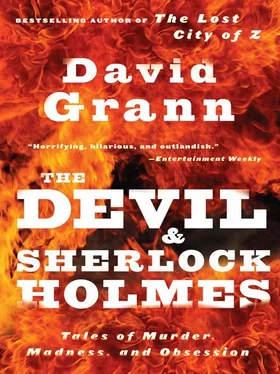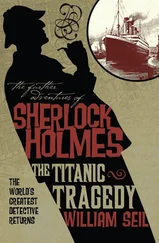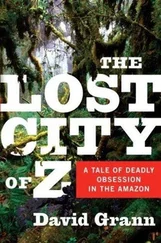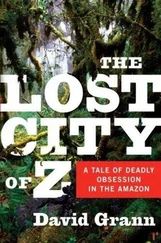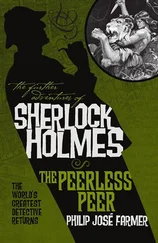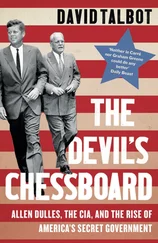—May, 2004

In December, 2006, near the Ogasawara Islands, south of Tokyo, a Japanese scientist and his squad finally captured a live giant squid. After spending years pinpointing a potential location, they attached a chunk of squid to a missile-shaped multipronged hook and dropped it more than two thousand feet down. Eventually, they caught a relatively small female giant squid, measuring eleven and a half feet long and weighing a hundred and ten pounds. As the men tried to reel it in, the giant squid spouted water from its funnel and struggled to escape. By the time the men pulled the elusive creature on board, it had died from injuries. O’Shea has not given up his quest.
City of Water

 CAN AN ANTIQUATED MAZE OF TUNNELS CONTINUE TO SUSTAIN NEW YORK?
CAN AN ANTIQUATED MAZE OF TUNNELS CONTINUE TO SUSTAIN NEW YORK? 

No one knows how many sandhogs are, at any given moment, working beneath the streets of New York City, but one winter morning half a dozen men could be spotted gathering around a hole on the northwest corner of Tenth Avenue and Thirtieth Street. The hole, surrounded by a tall aluminum fence, was thirty feet wide and reinforced with concrete. A priest had visited months before, to offer a brief prayer: “May God be with all ye who enter here, that the earth shall return ye safely.” Now, as the sun rose, the men stepped from the snow-covered ground into a green metal cage, which was suspended over the chasm by an enormous winch. They wore yellow slickers and rubber boots with steel tips; they carried, among other things, flashlights, scissors, cigarettes, cough drops, knives, extra socks, and several twenty-pound crates marked “EXPLOSIVES.”
A worker who was to remain above ground pulled a lever, and the cage began to descend. As it accumulated speed, and the light from the surface grew thinner, James Ryan, one of the older men in the crew, peered over the edge into the void. He had a long, hard face flecked with scars. “We got nine cases of dynamite,” he said. “That should be plenty.”
His voice reverberated in the shaft as the men went down thirty, forty, fifty feet, then another fifty, then a hundred more. “Two hundred,” one of them called out. By three hundred feet, they could no longer see anything above or below. Surrounded by darkness, and pressed closely together, the men exchanged sight for sound—the ping of dripping water, the echo of voices, the cable groaning overhead. At five hundred feet, the air became warmer, denser; one of the men put on a mask to keep out the dust that floated through the shaft. “All right,” Ryan told me. “We’re almost there.”
A thin beam from a flashlight suddenly rose up from the bottom of the shaft, catching the men’s faces. They were all part of the fraternity of sandhogs, a rare breed of tunnel digger whose name comes from the workers who excavated the soft earth under the Brooklyn Bridge in the eighteen-seventies. The men in the cage with me were mostly middle-aged, with barrel chests and knotted fingers; dust had already begun to streak the skin around their eyes. A bell sounded, and the cage came to a halt, bouncing up and down on the cable. “This is it,” Ryan said. “Brace yourself.” He unsealed the cage door. We were nearly six hundred feet underground.
Until that moment, I had only heard tales of New York City’s invisible empire, an elaborate maze of tunnels that goes as deep as the Chrysler Building is high. Under construction in one form or another for more than a century, the system of waterways and pipelines spans thousands of miles and comprises nineteen reservoirs and three lakes. Two main tunnels provide New York City with most of the 1.3 billion gallons of water it consumes each day, ninety per cent of which is pumped in from reservoirs upstate by the sheer force of gravity. Descending through aqueducts from as high as fourteen hundred feet above sea level, the water gathers speed, racing down to a thousand feet below sea level when it reaches the pipes beneath the city.
It is a third water tunnel, however, that is the most critical. Designed to meet expanding demand and to serve as a backup system in case something ever happens to City Tunnel No. 1 or City Tunnel No. 2, City Tunnel No. 3 has been under development since 1969, and was initially billed as “the greatest nondefense construction project in the history of Western Civilization.” Already, twenty-four people have died building it—roughly a man a mile—and it is not expected to be completed until 2020.
As an engineering feat, the water-tunnel system rivals the Brooklyn Bridge and the Panama Canal. Yet it has the odd distinction that almost no one will ever see it, save for the sandhogs who are building it. Over the years, the men have constructed an entire city under the city, a subterranean world as cluttered as the Manhattan skyline: it includes four hundred and thirty-eight miles of subway lines, six thousand miles of sewers, and thousands of miles of gas mains. “If it’s deeper than a grave,” sandhogs often say, “then we built it.” The water tunnels have become the sandhogs’ greatest and most elusive achievement, an often deadly effort that has consumed generations. “I’ll take you down there if you want,” Jimmy Ryan had said when I asked him to show me the tunnel’s newest section. “But, trust me, it ain’t like Macy’s down there.”
A large, reticent man of fifty who prefers gestures—an upturned eyebrow or a curled lip—to words, he has spent nearly as many hours underneath the earth as above it. “I started working on the third water tunnel when I was a kid,” he told me. “I’m still working on it, and I’ll probably be buried in it.” Ryan, who was elected president of the sandhogs’ union, Local 147, in 1999, has trouble lifting his shoulders; his red hair has turned silver, and his broad chest is compressed, as if it were about to collapse.
After Ryan opened the cage, I stepped out with him and the other men into the bottom of the shaft. Water seeped down the sides of the opening and dripped on us. There was a pool at our feet, and as we moved forward the icy water spilled over the tops of our boots. I began to sink in the muck, and Ryan gave me his hand to pull me out.
“Don’t stand under the shaft,” he said. “If somethin’ falls from the top, it’ll go right through you.” I looked up and could barely see the opening. Once, in Queens, a sixteen-ton winch fell down the shaft, crushing one worker and injuring seven others; another time, a man died after being impaled by a broken icicle.
As I followed Ryan into the tunnel’s main artery, it was hard to orient myself. There were only a few scattered electric bulbs, suspended from wires clamped to rocks and shrouded in mist, and I blinked, trying to adjust to the watery light. Several of the men turned on flashlights; through the shadows I could see a hospital stretcher and emergency medical supplies propped against a wall. At last, the tunnel came into focus: a cramped, crumbling cavern that extended a hundred yards or so in either direction. This stage of Tunnel No. 3 will eventually run nine miles, reaching down to the Manhattan Bridge and looping up to Central Park; its walls will be honed into a smooth cylinder, ten feet in diameter and lined with concrete. But at this early stage swords of black schist—formed more than four hundred million years ago—hung from the ceiling, which was buttressed with steel bolts to prevent collapse. Ventilation pipes ran along the sides of the tunnel, circulating the choked air, which, unlike the freezing air at the surface, was nearly seventy degrees, a humid mist of dust and fumes.
Читать дальше
